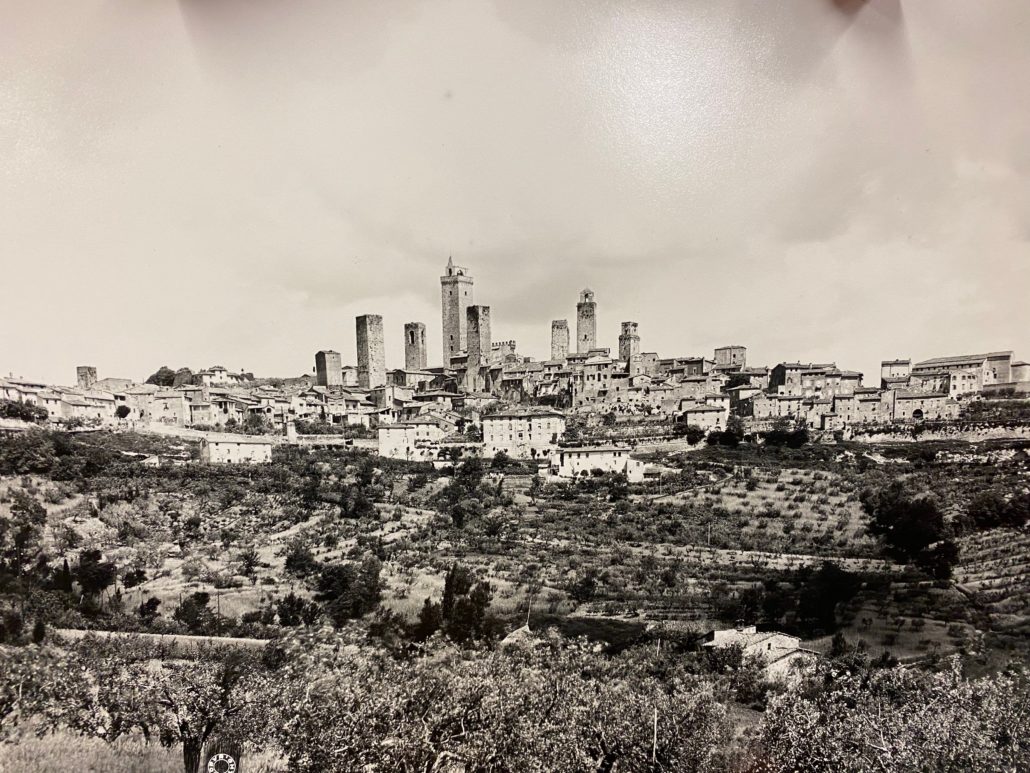Introduction
The Collegiate Church of San Gimignano, dedicated to Santa Maria Assunta and known informally as La Collegiata, sits in San Gimignano, a small town outside of Siena in Tuscany. During the medieval period the town of San Gimignano served as the primary center between the trade routes linking Pisa and Siena. (1) San Gimignano’s location on these trade routes, together with thriving commerce and moneylending sectors, created great wealth for certain Sangimignanesi families, resulting in the construction of the great towers that the town is still known for today [fig. 1]. (2) In 1255, then again in 1314, the town of San Gimignano created its first constitution and then its first revision. The town’s original constitution coincided with city planning that aimed to unify the city in order to enter into competition with the more prominent cities in Tuscany. (3) It was during this period of economic growth and civic stability, between the second half of the thirteenth century until the fifteenth century, that the Collegiata, located in the main square of the city, once known as the Piazza della Pieve and now known as the Piazza Vittorio Emanuele, was decorated with most of its interior frescos. (4)
For much of the medieval period, communal civic life was centered around the Collegiata. It was the central church for the townspeople and, until the 1270s, communal council meetings took place within the Collegiata and some council offices were located there as well. (5) After the 1270s, meetings were moved to the Palazzo Mantellini, an old private palace across the street from the Collegiata that was converted into communal headquarters. (6) There was an established relationship between the civic government and the ecclesiastic leaders of San Gimignano.
(1) Jean Campbell, The Game of Courting and the Art of the Commune of San Gimignano, 1290-1320. Princeton: Princeton University Press, 1997. 24.
(2) Campbell, 24.
(3) Campbell, 25.
(4) Edmund G. Garner, and Helen M. James. The Story of Siena and San Gimignano. Project Gutenberg, 2014. 456-457. And Campbell, 25.
(5) Campbell, 28.
(6) Campbell, 28.

